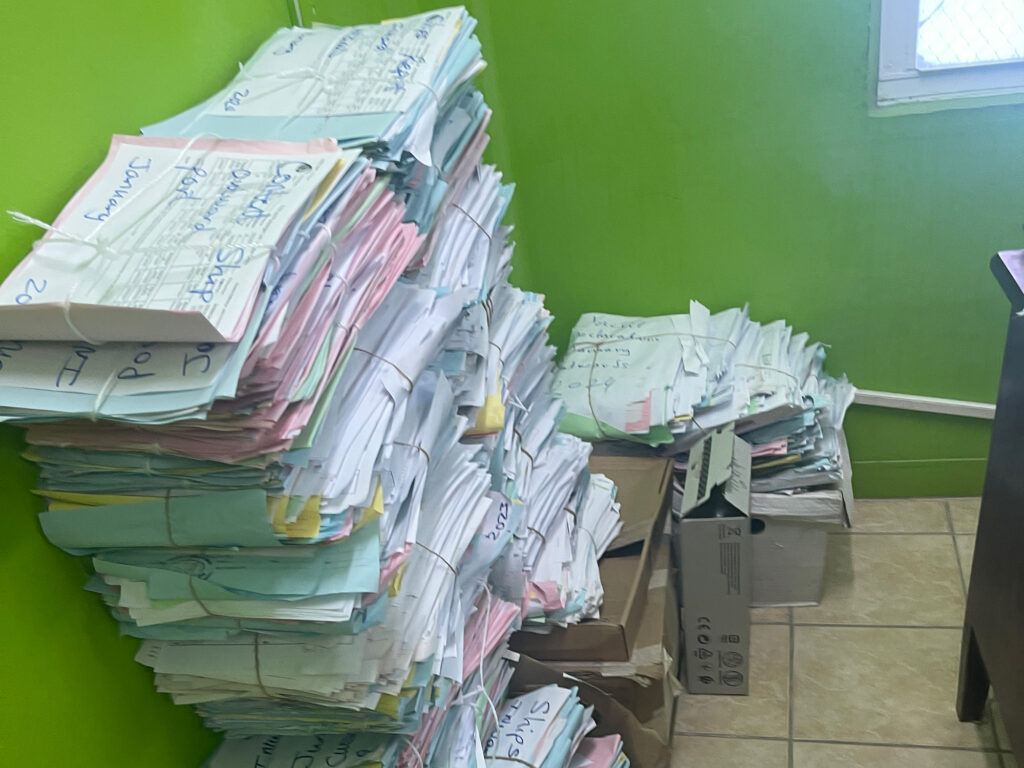
In the Eastern Caribbean, as you sail from island to island, you are sailing from country to country. There will be customs and immigration paperwork at each stop. If you visit even a few islands, you’ll be clearing in when you arrive, clearing out when you leave, and then doing it all over again.
Each island has slightly different procedures. It’s enough to try your patience. Plan to spend at least an hour at each office—or longer, if there’s a line. Bring the ship’s documents, crew and passenger passports, and the exit paperwork from the last island.
The Doyle Guides app spells out a procedure for each island, with regularly updated information. (Printed guidebooks get updated every two years.) NoonSite also has details about the process worldwide. Most individual islands have a Facebook page, too.
The Virgin Islands
All yachts arriving in the US Virgin Islands need to check in and register with customs and the Department of Homeland Security. On St. Thomas, that’s done at the airport or at the facility inside Cruz Bay on St. John.
Try not to go in when a ferry from the British Virgin Islands is there. There’s not much dock space, so pick up a park mooring outside and take the dinghy in.
In the BVI, use SailClear (see below) to begin the process, then go ashore to the offices on Tortola, at West End and Road Town.
All About SailClear
English-speaking islands use this online customs declaration form that is accepted at most ports of entry throughout the Caribbean and Bermuda—minus Antigua, the Bahamas and the French islands.
Annual registration costs $25. Once you have filled out the form with basic information such as the yacht’s name, crew and guest names, and passport information, it’s all still there the next time you need it.
This form is sent in prior to your arrival, but sometimes, a system is down and you still have to fill in the information by hand, in person.
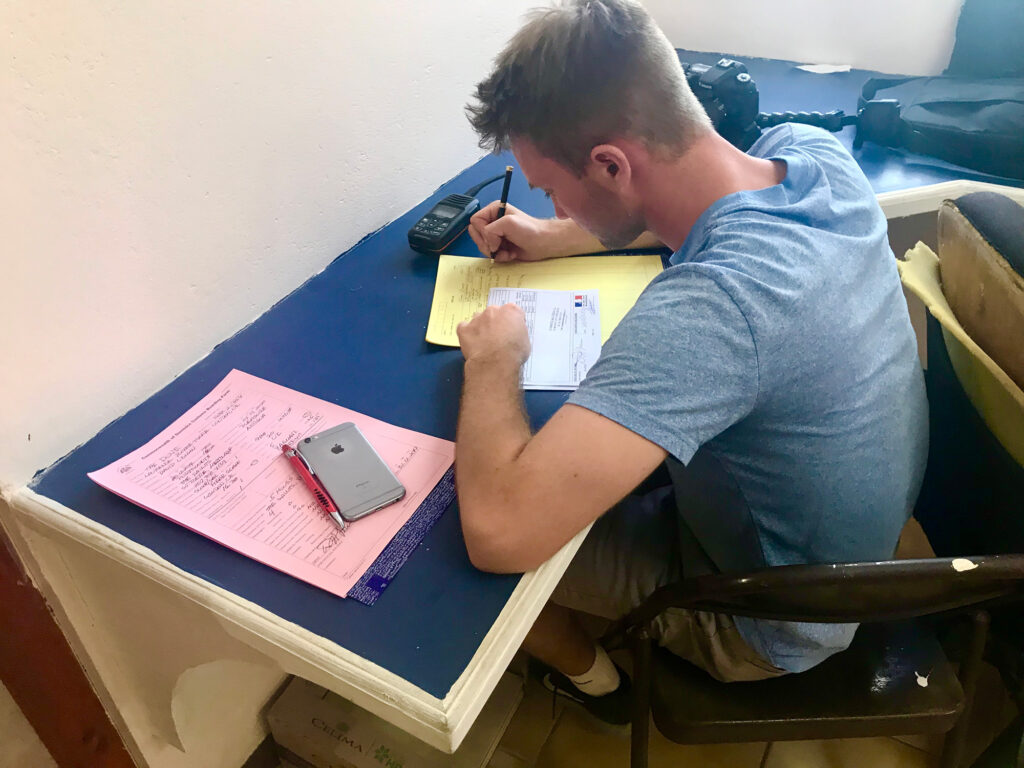
Antigua uses a slightly different system, called eSeaClear. On the French islands of Guadeloupe and Martinique, if you understand French, you can clear customs online through dedicated websites. Or, anchor the boat, take the crew ashore in the dinghy, and let the crew start shopping while you clear in at a computer terminal in town. After pressing the send button and paying a few euros for the service, you will receive a printed cruise permit that is valid for several months.
On the French side of Saint-Martin, you’ll find a computer terminal in one of the chandleries ashore. Should you pick up a mooring in Marigot, you have to check in at Port de Gailsby and pay a 35-euro fee. You’ll also have to complete an online form prior to visiting the office. On the Dutch side of the island, you’ll need the paperwork from your last port of call, proof of insurance, ship’s papers, a crew list and passports. There’s a bridge fee for entering the lagoon. Once in, you can pass between the Dutch and French sides of the island by foot, car or dinghy without checking in or out.
On the French island of St. Barts, you can begin the process online. You will be given a passcode to use in person at the port office. Or, you can use the computer terminal there. If you’re only staying for 24 hours, you can clear out at the same time.
Antigua has four ports of entry, but clearing in at Jolly Harbour is cheaper than at English Harbour or Falmouth, where you have to pay additional park fees. You can anchor outside Jolly Harbour and take the dinghy in. Fill out the eSeaClear (different from eSailClear) form online and send it in. There are four offices you need to check in with: health, customs, immigration and the port office. Expect to spend a few bucks, and an hour or more.
No matter where you clear in on Antigua, if you plan to sail around to English or Falmouth harbors, where all the action is, you’re supposed to go ashore to customs at Nelsons’ Dockyard and pay the park fee.
The French Islands
You will need to check in at each island. On Guadeloupe, the first port is Deshaies. The French do not accept eSailClear, but they do accept an online form. In Les Saintes, a customs computer is in the building just south of the ferry landing.
Dominica
Submit the SailClear form before arriving. If you’re stopping at Portsmouth, call the Portsmouth Association of Yacht Security on VHF radio channel 16 as you enter the bay. Someone will come out, show you the mooring, collect the $15 mooring fee and take care of the clearing-in process for a fee.
You can also do this yourself, down at the commercial dock a few miles south of town. You can clear in and check out at the same time if you are staying for only a few days.
Martinique
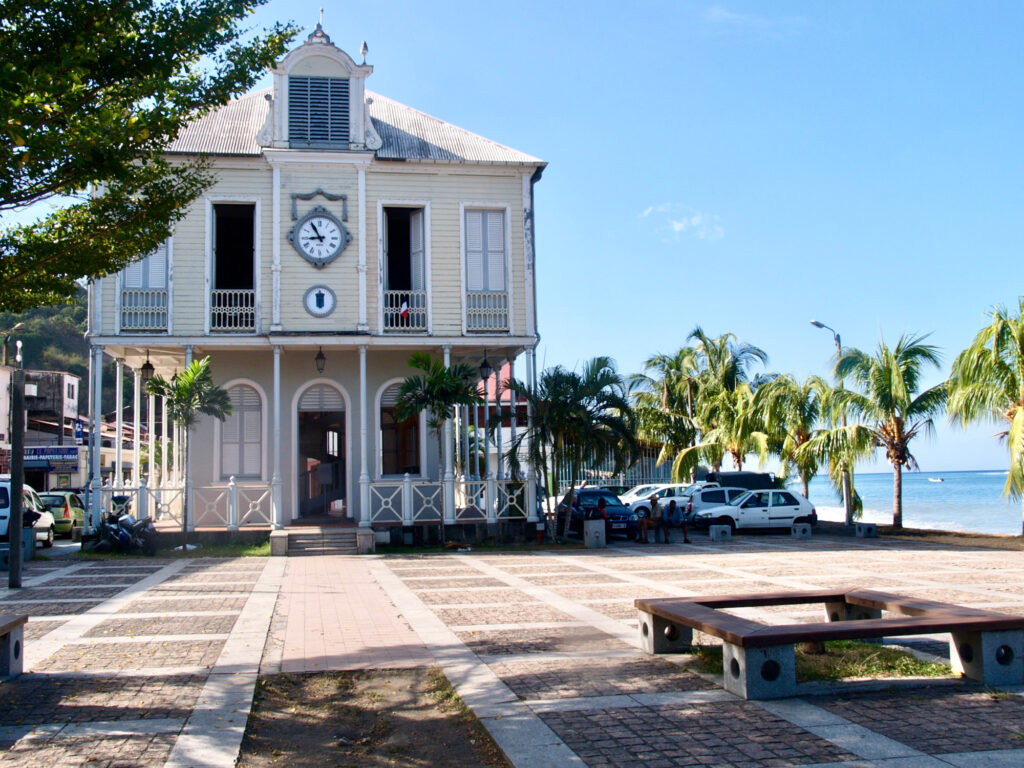
Sailing south from Dominica, Saint-Pierre is the first port on Martinique. The customs terminal is in the town hall at the end of the park, by the town dock. You can also clear in at Fort De France, Saint-Anne and Le Marin. Use the online form.
St. Lucia
Anchor out in Rodney Bay and take the dinghy in, or call ahead to secure a berth at the marina. You’ll find the health office on the first floor, and customs and immigration on the second floor. Before you arrive, submit your SailClear form, or use their terminal to complete it. You can also check in at Marigot and Soufriere.
St. Vincent and the Grenadines
In Chateaubelair, there is a customs and immigration office. It’s a rather relaxed process, if you can find the house and someone at home.
There is no office in Cumberland Bay; you’ll have to stop in at Wallilabou Bay or Kingstown to clear in. Whichever port, use SailClear.
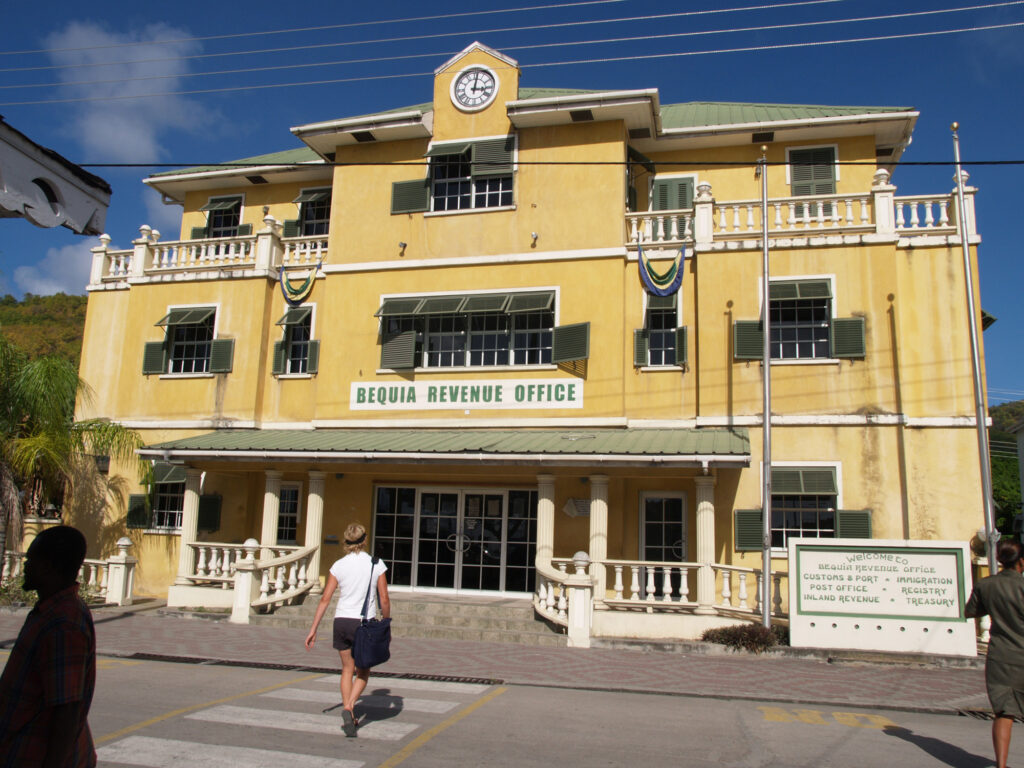
On Bequia, the post office across from the ferry terminal is where you’ll find customs and immigration. If you plan to visit the Tobago Cays, obtain a permit here. Once cleared in, you are good for the rest of the Grenadines down to Union Island. If you are heading farther south to Carriacou and Grenada, then you need to clear out of the Grenadines on Union Island. The office is in a green, single-story building across from the garbage dump.
Carriacou and Grenada
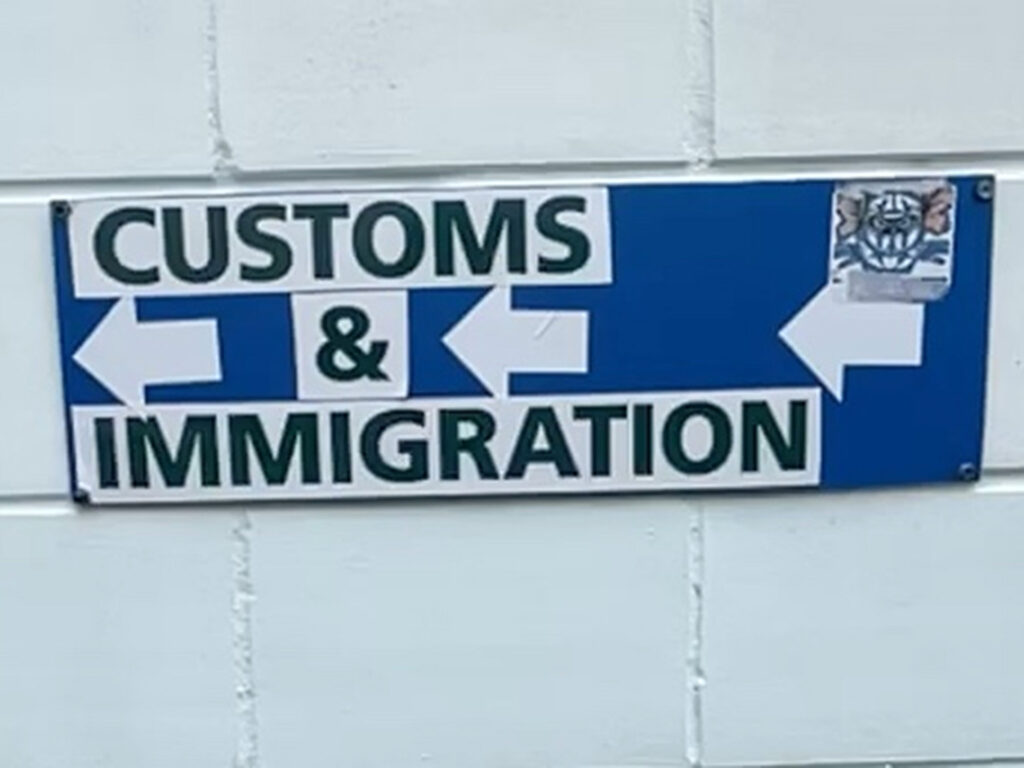
You can clear in at Tyrell Bay on Carriacou. The office is at the marina. Once cleared in at Carriacou, you are not required to clear in at Grenada.
Final Tips
Go in dressed like a professional yachtsman, not some Captain Ron on vacation. Know the process for each island. Be prepared with the right paperwork. Have enough of the local currency on hand.
The easier you make the process for the agent, the faster the process will go.








